Washington State Football Offensive Preview
WSU visits Berkeley with both teams needing a win to preserve likely bowl-eligibility.
WSU started the season 4-0 and ranked #13 in the AP polls after defeating #14 Oregon State in the inaugural Pac-2 Championship, but is currently on a 5-game losing streak. Can you imagine starting the season hot, getting ranked, and then going on a huge losing streak? As a longtime Cal fan, I definitely can’t relate.
To be honest, I don’t really have a good explanation for it. This match looks like a relatively equal match on paper by all stats and metrics (and probably why Cal is just a 1.5-point favorite), but I feel like these teams have trended in opposite directions. Wazzu started the season off strong, with a win over a ranked Oregon State team (they got a big early lead and survived the OSU comeback attempt). They had competitive losses to ranked UCLA and Oregon teams, but they were also blown out by a now-ranked Arizona team. Those losses could be forgiven, except… Washington State also managed to lose to lowly Stanford and ASU teams.
Meanwhile, Cal has endured a brutal stretch of the schedule, with blowout losses to #5 Washington and #6 Oregon, competitive for part of the game losses to #12 OSU and #13 Utah, and a loss to an awful USC team that I don’t want to talk about, but it should have been clear to anyone watching that Cal was the better team last week. And though the stats between the two teams may looks similar, it’s only recently that Cal has found quarterback of the future and future Heisman candidate Fernando Mendoza, and so season-long stats don’t paint the complete picture in my view.
In the games that Wazzu has struggled, it was mostly against teams with an overwhelming pass rush that forced quarterback Cameron Ward to get the ball out way sooner than anticipated, and often to receivers who didn’t have much separation. Although Ward is certainly capable of making such throws in these scenarios, it’s generally unsustainable to expect even the best quarterback in CFB to do so all game long.
But… ASU? Stanford? I think some of this can be attributed to the natural variance of quarterback play. Although Cam Ward struggled against good UCLA and Arizona teams, he looked fantastic against a great Oregon team. Why? He faced the same issues in all 3 games, but Ward just had a superb game against Oregon, making those impossible throws under pressure to tightly covered receivers all game. Against Arizona, ASU, and Stanford, Ward did not have as great of a game.
Obviously, it will be key to Cal to keep Ward off his game. Wazzu has mostly abandoned the run game, so it will also be key to watch if the Cal pass rush can get to Ward (probably won’t get a lot of sacks, but enough to keep him uncomfortable). Wazzu’s pass blocking, while usually stellar, has not looked too good in recent weeks.
Let’s take a closer look.
Quarterback
The Wazzu offense lives and dies with its quarterback, Cameron Ward. Ward has NFL-level athleticism with a lot of natural talent to build on. He’s a dual-threat quarterback with NFL arm strength, and although he’s a pass-first QB, he effectively uses the threat of his legs to put coverage defenders in a bind, which makes him very hard to defend:
Ward’s biggest strength is his ability to buy time in the pocket and still keep his eyes downfield. Wazzu runs an Air Raid offense designed to spread the field, which means that given enough time, Ward will eventually be able to find an open receiver:
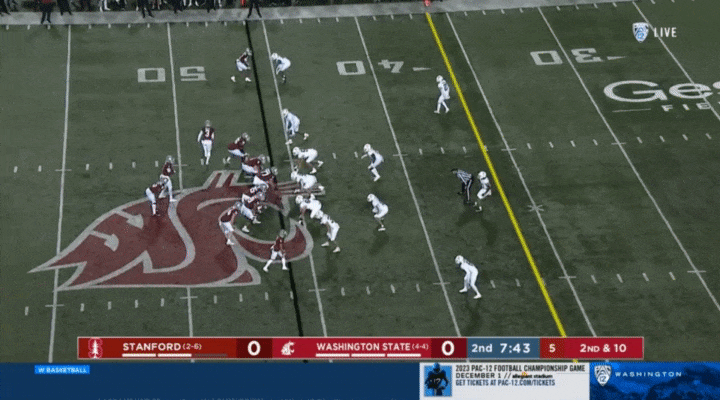
A lot of dual-threat quarterbacks get antsy in the pocket and look to take off on their feet, or perhaps escape the pocket prematurely and run themselves into pressure (say, Shedeur Sanders or Caleb Williams), but Ward has a very good feel for the pocket and where he should move:
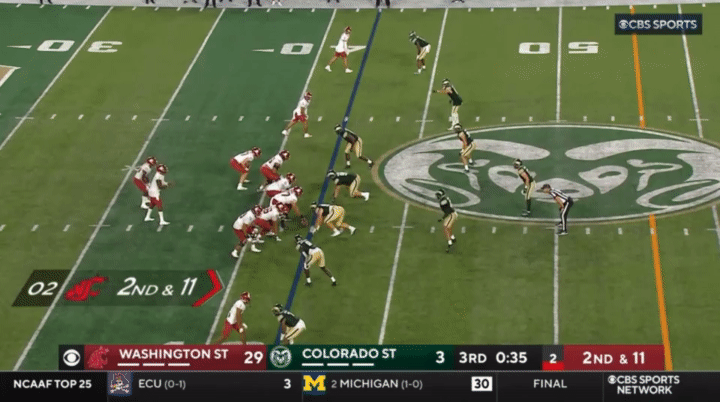
I’m not sure if it’s because Ward is not as comfortable with his receivers this season (Donovan Ollie is in the NFL, De’Zhaun Stribling transferred to Oklahoma State, and his Incarnate Ward teammate Robert Ferrel graduated), but one criticism here is that Ward will spend way too long processing the field before making a decision. It’s great if you can create a ton of time in the pocket (and he may very well do so against Cal):
But ideally, you’d want to see Ward making quicker decisions with the ball. Against teams with a strong pass rush—say, Arizona or UCLA—he has less time to find open receivers and struggled as a result. To Ward’s credit, though, Oregon has a great pass rush as well and Ward had a great game against them, although Oregon did make good adjustments at halftime to contain Ward.
Ward is probably not going to run the ball as much as some other dual-threat quarterbacks, but he needs to be accounted for in the run game, because if he has the open space, he will take it:
Coming back to his best attribute—the way he keeps his eyes downfield as he moves around in the pocket—he has a set of wheels, but he’s always looking to make plays through the air. Look at the way Ward avoids the pass rush without even looking at them, because he’s too busy looking for a receiver:
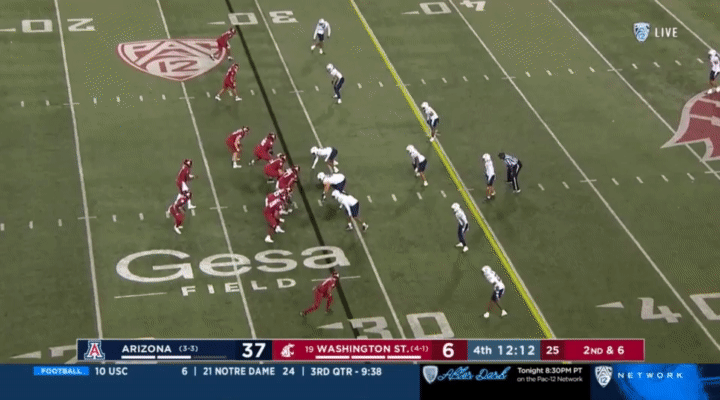
Cam Ward definitely has an NFL-caliber arm, and it’s most evident when he’s given time to throw. Here Ward shows excellent touch to drop the throw into where only his receiver can get it and still hit him in stride:
And again he fits the ball just over the defender, although the receiver’s momentum carries him out of bounds after the catch:
Not to mention, Ward can absolutely fire a laser of a throw into a tight window. It’s hard to see it as clearly in slow motion, but he fired this one in there:
Ward has shown the ability to operate of structure (similar to Caleb Williams). Ward will often roll out, throw on the run, throw across his body, throw off-platform, change arm angles to avoid an unblocked rusher, etc. (Conversely, some of this can be seen as a drawback, because his overreliance on upper-body throws can lead to inconsistent throwing mechanics).
Here’s an example of a throw he makes on the run, which he still made with great accuracy:
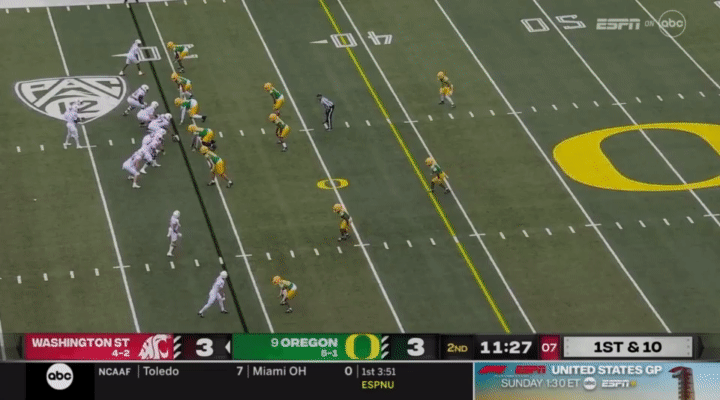
And here’s that sidearm throw I was talking about:
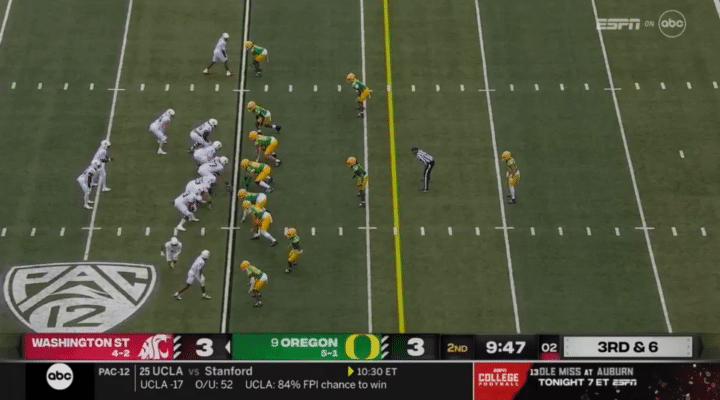
Ward generally takes good care of the ball, and he hasn’t thrown an interception in a win since… last October 1st, i.e. the last time Wazzu played Cal (Ward threw for 343 yards, 3 TDs/2 INTs). Usually if Ward is throwing interceptions, it’s because the opponent has him fooled on the coverage, and Ward’s struggles lead to a Wazzu loss (except against Cal, because of course).
There’s been a few times this season where Ward has made some bad reads that spelled trouble for the offense. For instance, in the following play, he reads the corner to be responsible for the receiver in motion out of the backfield, but it’s that corner who drops out of coverage to make a play on the ball for the interception:
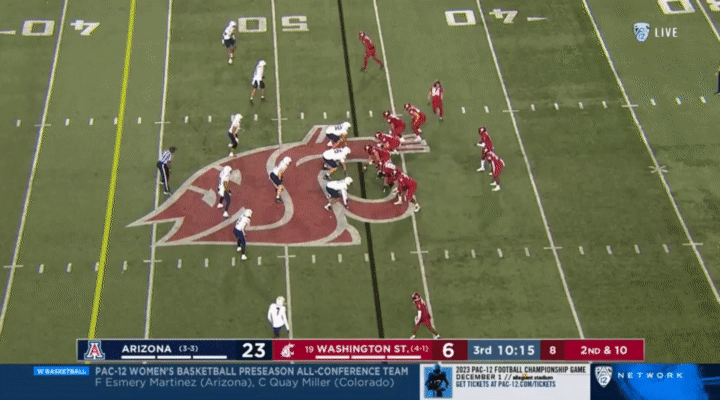
UCLA was generating a ton of pressure on Ward all game, but I don’t have an explanation for this play other than that Ward simply didn’t see the linebacker sitting there:
Because Wazzu is reluctant to run Ward too hard, they often sub in the backup quarterback, John Mateer, to run a lot of the RPO-type plays. Wazzu has used Mateer mostly as a gadget player, so generally if Mateer is in, it’s probably a designed quarterback run:
Mateer runs strong and will often initiate contact on runs, and so I was actually a bit surprised to see that he has some legitimate quarterback chops as well (he’s only really functioned like a quarterback in garbage time this season). Here he puts some nice zip on the ball into a tight window:
And he’s also shown the ability to put some nice touch on the ball:
I actually took a number of Mateer highlights (so he’s definitely made some nice plays this season), but I am omitting them here in the hopes that we see gadget-player Mateer and not garbage-time Mateer.
Washington State has the #2 passing offense in the conference (behind only Washington), so we should expect to see a lot of plays from Ward and maybe Mateer.
Running back
This is probably going to be a short section, because Washington State is last in the FBS (excluding FCS games) in rushing yards per game. They have just 707 rushing yards in 9 games this season, but 229 of those rushing yards came against a helplessly overmatched FCS opponent. In Wazzu’s last 5 games, they’ve averaged just 39.2 rushing yards per game. I would like to put some highlights here, but there hasn’t been much to show this season.
Wazzu returns their leading rusher from last season, Nakia Watson, but he’s struggled so far this season (perhaps playing through injuries?). He had 769 yards in 11 games last season (5.3 yards/carry), but he’s only managed 204 yards in 9 games (3.0 yards/carry) so far this season. Washington State might a little bit worse in run blocking than last year, but not enough to explain this sort of regression in my opinion (especially because Wazzu is often running against light boxes).
Here Watson finds a seam for his second-longest run of the season (the longest being 17 yards against Oregon State):
And here Watson does a nice job of cutting it back:
The previous backup, Jaylen Jenkins, has been dismissed from the team. In his place is the freshman RB Djouvensky Schlenbaker, whose name I remember because of how many times I had to type it into my notes while watching the games. In his first meaningful playing time of the season last week against Stanford, he had 13 carries for 34 yards (2.6 yards/carry). Here’s his best run:
Of course, it’s far too early for me to make any conclusion here. On the other hand, I am a fan of the former walk-on, Dylan Paine. He’s not the biggest dude, but he runs with a low center of gravity, initiates contact, and does a good job of breaking tackles:
Paine is questionable for the game due to an ankle injury from their game against Oregon, but Paine is the only player I can see actually making an impact in the run game against Cal.
Receivers
Wazzu likes to spread the ball around, so I figured I’ll focus on Wazzu’s top targets in lieu of mentioning every player on the roster. Cam Ward’s favorite target is the slot receiver, Lincoln Victor (the starting slot receiver last year, Robert Ferrel, was also Ward’s top target—it’s also possible that Ward just likes throwing to the slot).
Victor is an undersized receiver, but he does a good job of route running and finding the open space in zone, and his large number of targets can also be explained by his propensity to get open:
He’s fast, and shows a nice ability to pick up yards after the catch, and so Wazzu likes to get him the ball in space:
And although he’s not the biggest target, he’s shown to have a pretty big catch radius and some really good hands; he’s a very reliable receiver when the ball is thrown his way. Here he does a nice job of adjusting to the ball:
And here he makes a nice diving catch after getting open:
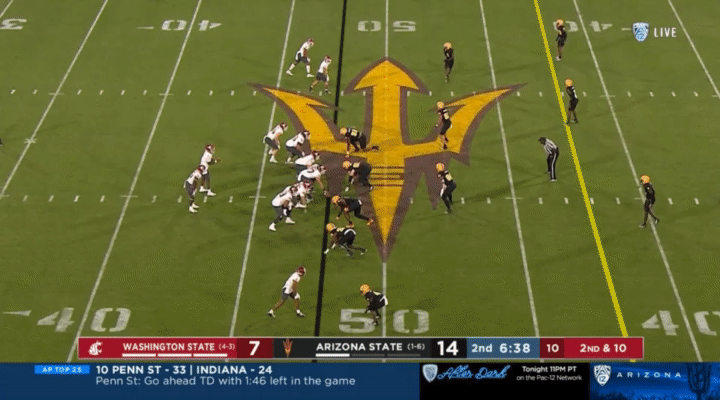
To give you an idea of how much Ward likes to throw it to Victor, note that he has the most receptions in a single game this season with 16 receptions (for 161 yards) against Oregon a couple weeks ago. 16 catches on 19 targets. If Lincoln Victor is fully healthy, we will be seeing a lot of him.
At the X-receiver spot is WR Josh Kelly. One of the key contributors in Wazzu’s marquee win over Oregon State this season was Josh Kelly, who had a career game for 8 catches, 159 yards, and 3 TDs. Kelly just decided that he was going to be virtually unstoppable, and caught everything thrown his way, coverage be damned.
Against Oregon State, WR Josh Kelly made multiple one-handed catches. Even with defenders completely locking up an arm (which is mysteriously not PI this season, but I digress), Kelly would still find a way to pull the ball in with the other. Here Ward drops it in for Kelly, who just yanks it out of the air and tucks it in:
He did it again in the endzone, and I included the slo-mo this time to show just how ridiculous this catch was:
As you can see from the above, Kelly has fantastic hands. Although he’s not getting a ton of separation here, he’s also shown an ability to make contested catches:
Kelly is usually making catches down the sideline or deep down the middle of the field (corner route, deep post, etc), so I haven’t seen a ton of YAC ability on display, but he did do this to OSU:
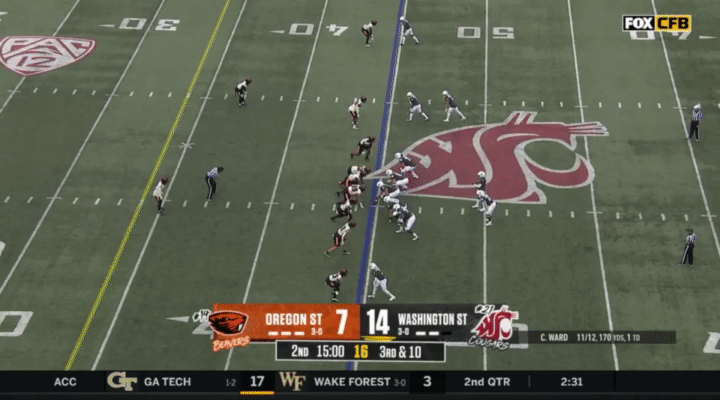
Finally at the Z-receiver position there’s the UNLV transfer WR Kyle Williams, of whom I have seen a lot, considering that I also previewed UNLV in 2022 and watched their entire 2021 season and part of the 2022 season. Williams was clearly UNLV’s best receiver in 2021, but I was afraid he’d be overshadowed by Ricky White in 2022 (spoiler: he was). Kyle Williams currently leads the team in receiving yards, so he’s definitely found a home at Wazzu.
Like Kelly, Williams can take the top off a defense going deep, and he also has great hands and contested catch ability:
There’s a good chance that WR Kyle Williams will be matched up against his old teammate and current Cal CB Nohl Williams, and that should be a good matchup.
There’s plenty more receivers we will see Saturday: There’s the promising and talented freshman WR Carlos Hernandez, and he’s made some great catches this year and shown a lot of potential for the future. There’s the SJSU transfer Isaiah Hamilton, who I have no strong feelings about one way or another. There’s TE Cooper Mathers who will run a lot of short routes as more of a possession receiver, along with TE Cameron Johnson. TE Billy Riviere III had a lot more receiver snaps last year, but this year he’s primarily used in blocking situations.
Miscellaneous
There’s a few more things I wanted to mention, but didn’t have enough to dedicate entire sections for. On special teams, the kicker Dean Janikowski might have no familial relation to former NFL kicker Sebastian Janikowski, but he also has an NFL leg and can kick it deep (he’s 2/3 from 50+ yards this season, with a long of 55 yards). The rest of special teams is not as rosy: Washington State is a liability in kickoff/punt return coverage, and is last in the FBS in kickoff return defense.
Another thing I wanted to point out to watch for is snaps. For whatever reason, Wazzu has had a number of bungled snaps this season, but it’s mostly turned out okay for them. Here’s a couple examples I pulled from the Wisconsin game, for instance:
And another one that was bailed out by Cam Ward staying cool:
Could be nothing, but I figured it’s worth keeping an eye on.
Conclusion
Cal needs to win out (Wazzu, Stanford, UCLA) if they want to go to a bowl. Wazzu will likely beat Colorado, but they’ll need to either beat Cal or Washington to go to a bowl, and one of those is a lot more likely than the other (although UW has looked extremely vulnerable in recent weeks, and I would not be surprised at all if UW were upset).
Wazzu has a fantastic pair of edge rushers in Ron Stone Jr. and Brennan Jackson, but the rest of the defense has been extremely bad against the run (good news for Jaydn Ott), and Wazzu has an absolute liability at safety. Jake Dickert has had Wilcox’s number, but the Cal offense should be able to move the ball against Wazzu and score. Although Wilcox’s defenses have generally been great against Air Raid offenses, we’ve yet to see a Wilcox defense stop the new “Coug Raid” offense. Not letting Wazzu run the ball and keeping QB Cameron Ward off his game will be key.
Go Bears.


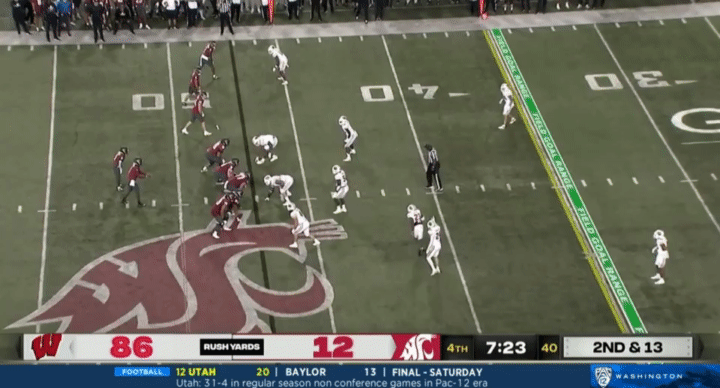
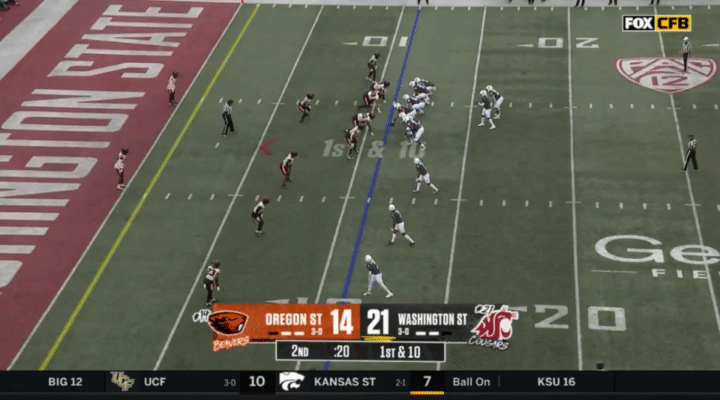
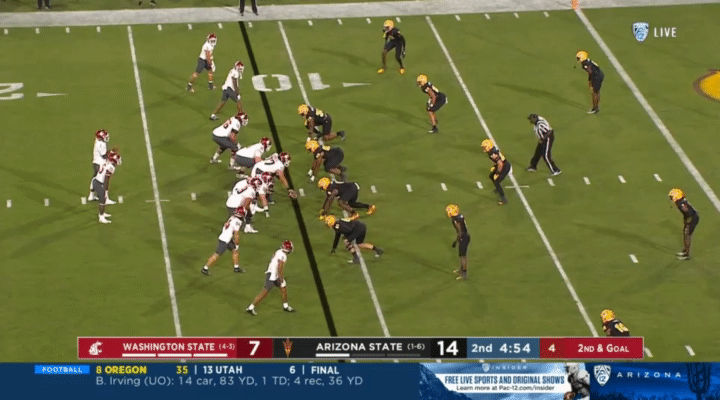

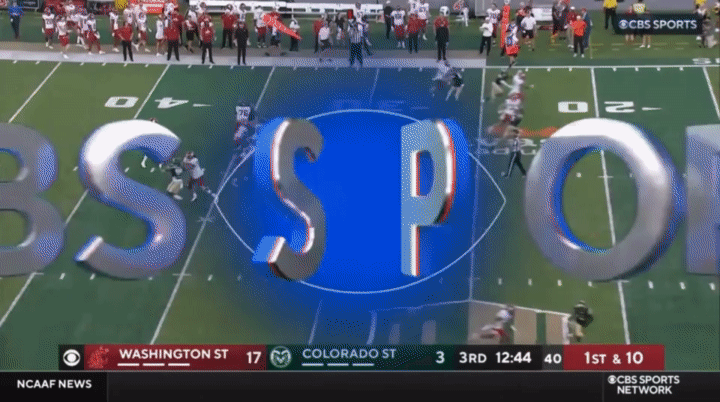
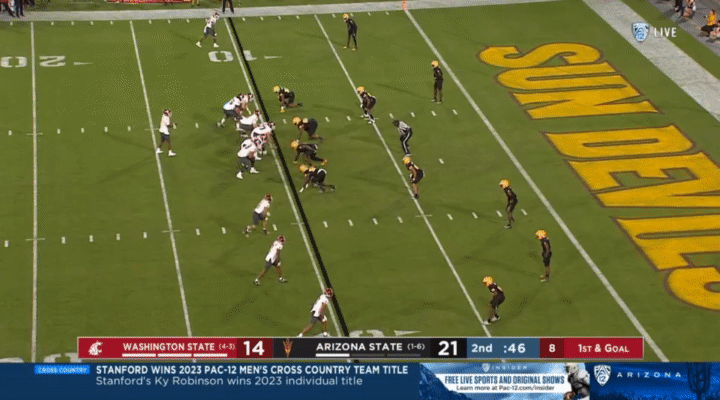
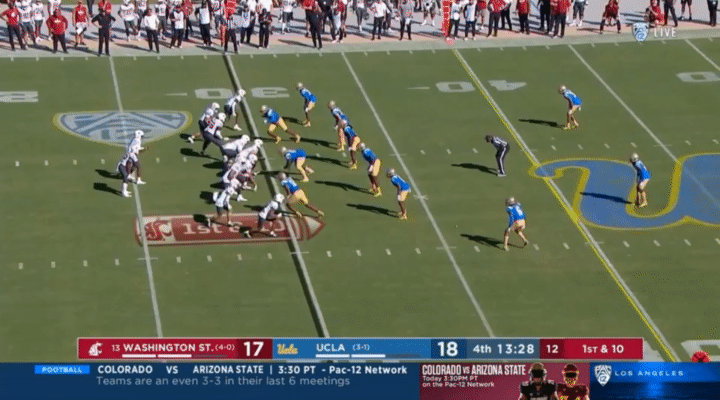
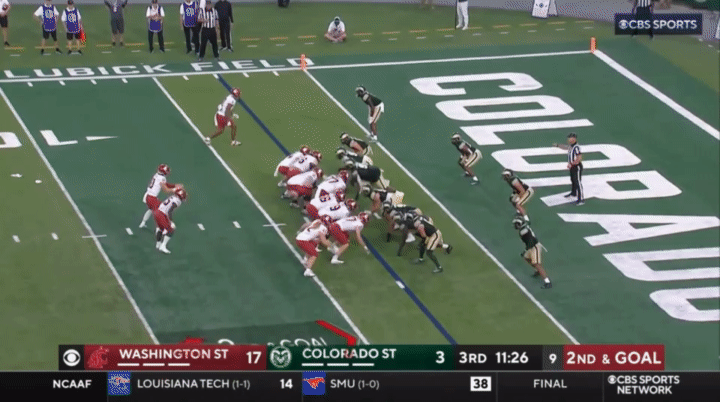
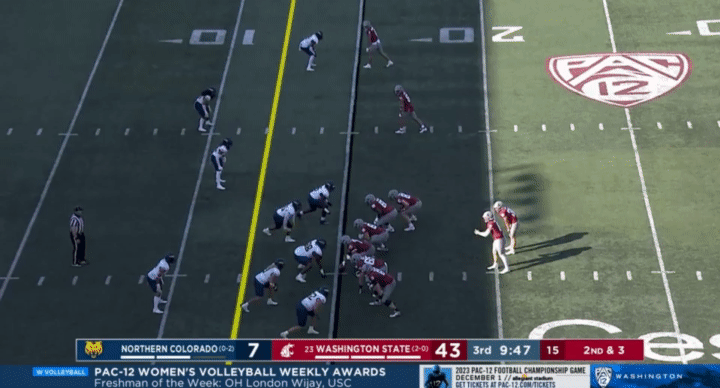
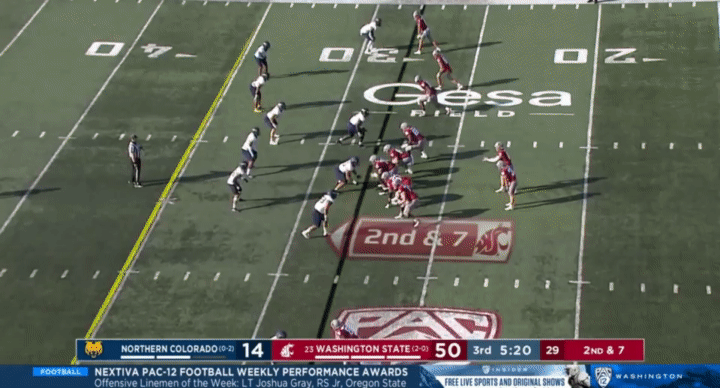
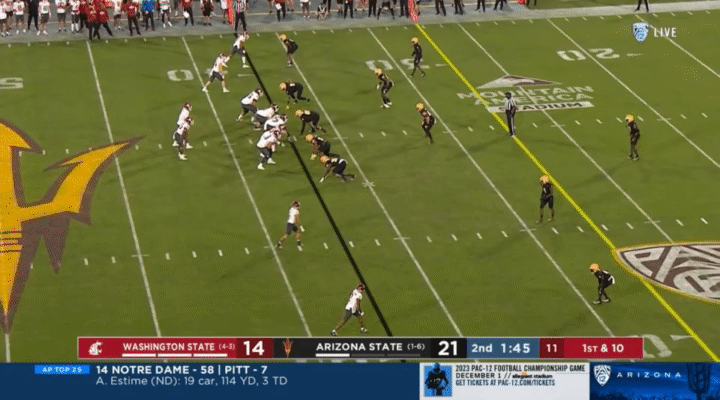
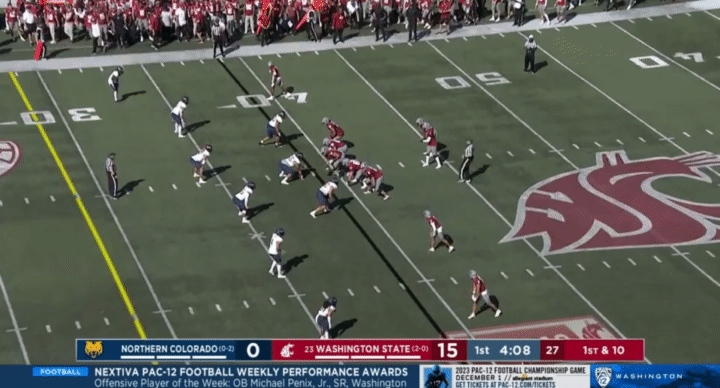
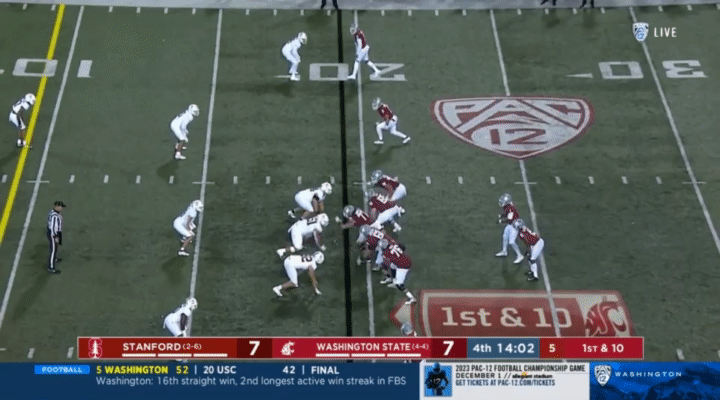
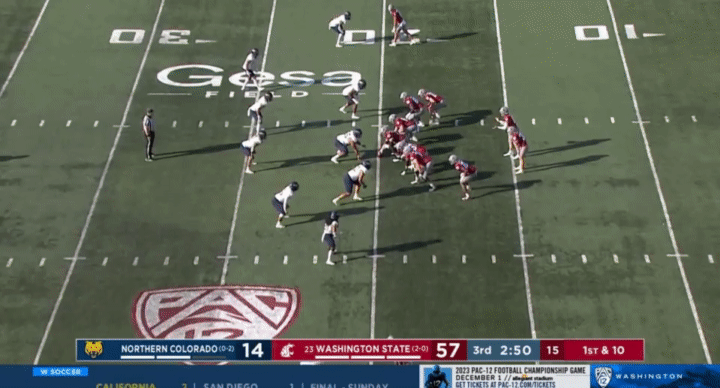
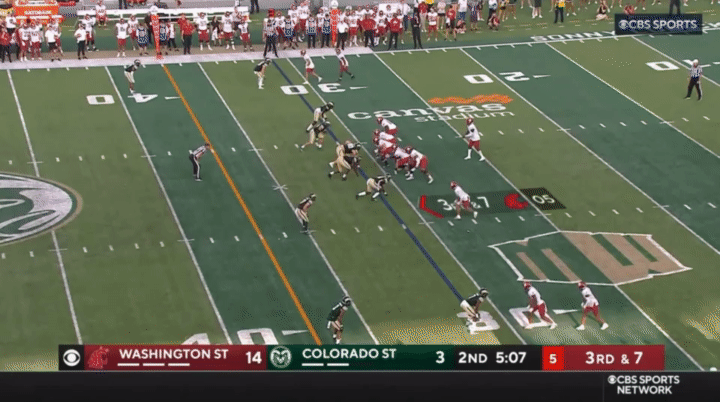
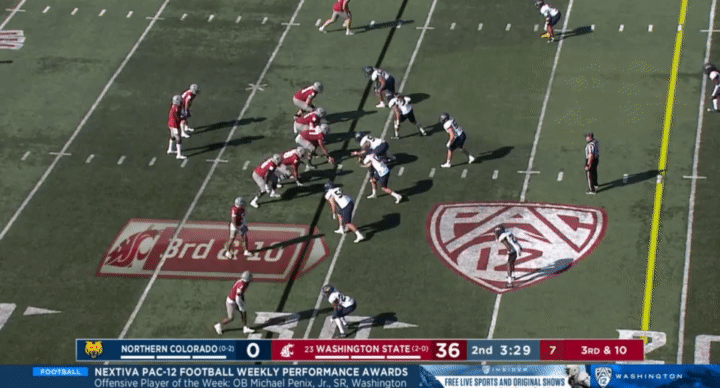
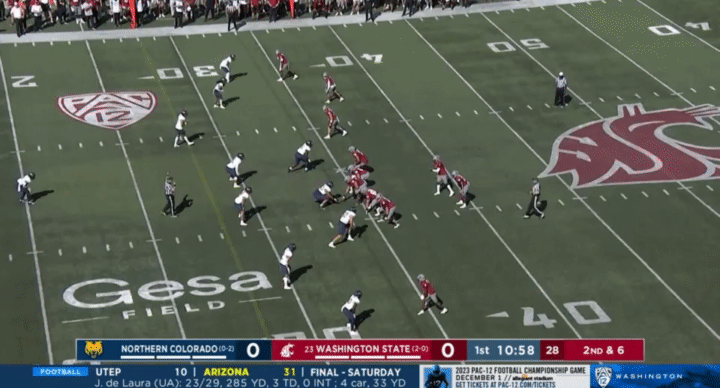
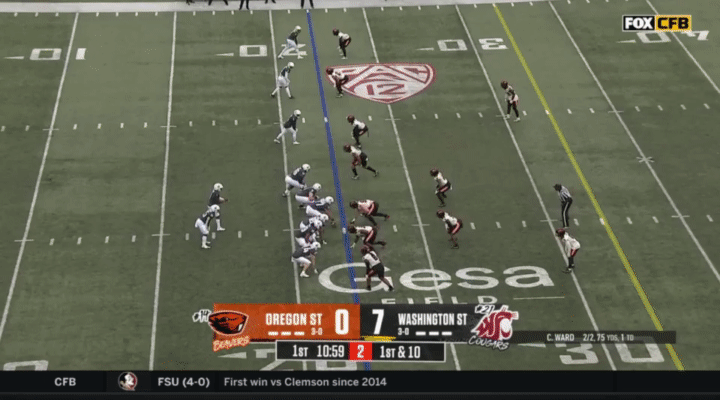
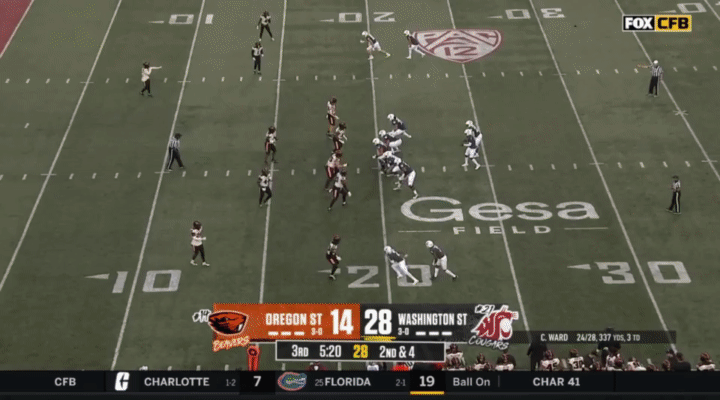
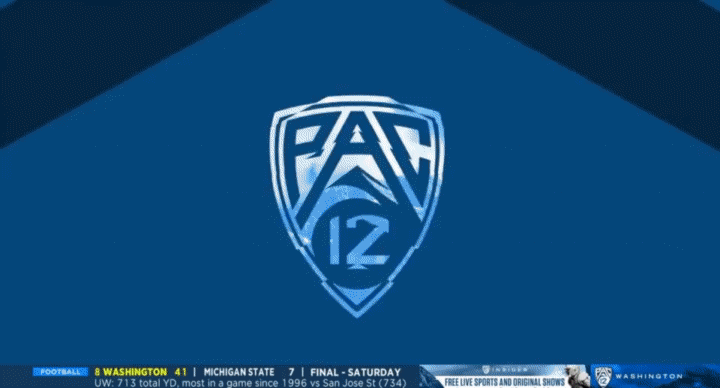
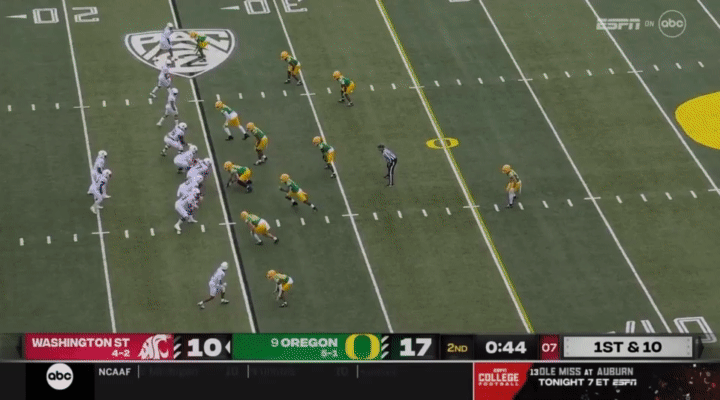
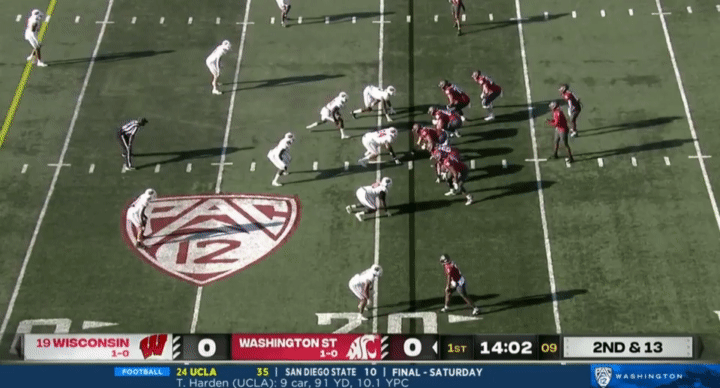
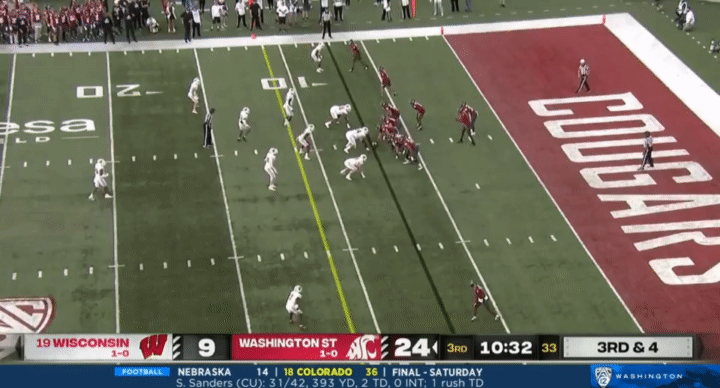
Given how bad their running game is, I predict they'll rush for 200 yards (because, you know, Cal), before Coug'ing it with a late turnover that allows the Bears to secure the win.
Cam Ward is a streaky player, and he has to be smacking his lips at getting healthy again against a team that has suddenly forgot how to defend against the pass. Cal has not only the worst defense in the conference this year but also one of the worst defenses in its history after giving up 50 or more points in four games over the past six weeks. Only Sonny's 2013 inaugural team managed that.
WSU has a quality win over Oregon State and put up 428 passing yards on Oregon at Autzen two weeks ago. Cal has no quality wins and did not respond well against Oregon after tanking against USC. This is an acid test for Wilcox to see if he has or hasn't lost the team this year. My head says WSU, but by heart says Cal. Should be fun.